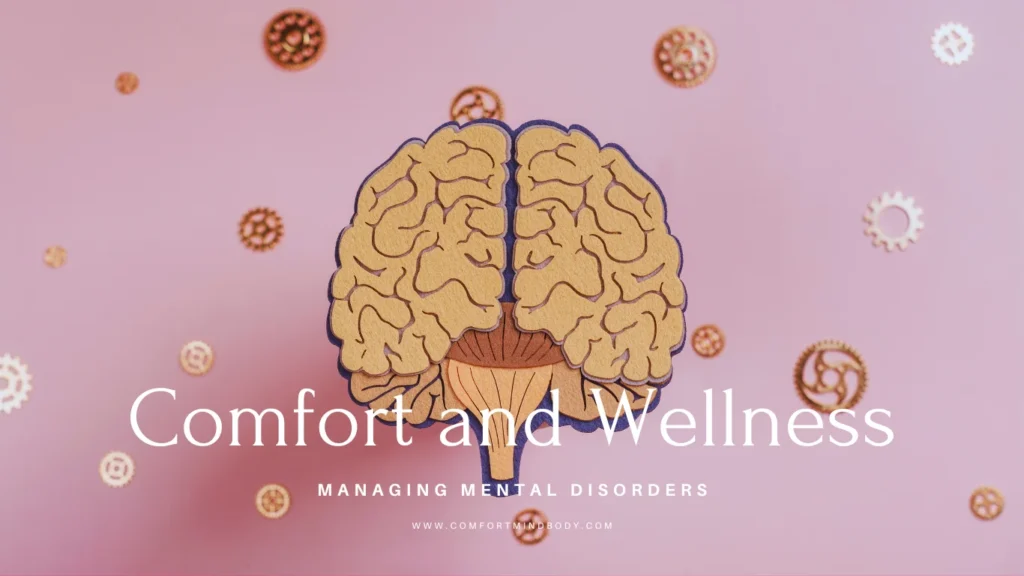Table of Contents
ToggleIntroduction:
In today’s fast-paced world, the workplace can be a source of significant stress and anxiety. Mental safety and psychological well-being at work are very important.
They help ensure employee satisfaction, productivity, and overall success for the organization. This article provides a guide to creating a strong workplace. It focuses on key ideas, strategies, and examples of mental safety and well-being at work.
The concept of mental safety in the workplace goes beyond ensuring that employees are physically safe. It means making a place where employees can share their thoughts and feelings freely.
They should not fear any negative outcomes. Psychological well-being, on the other hand, refers to an individual’s overall mental health and happiness. Together, these two aspects contribute to a resilient workplace where employees can thrive and perform at their best.
In the next sections, this article will look at why psychological safety is important at work. It will explain key ideas and definitions of mental safety and well-being. It will also discuss the four stages of psychological safety.
It will also show examples of psychological safety using real-life success stories. It will explain how leaders can create a safe workplace. Finally, it will provide strategies to promote mental safety and well-being at work.
Finally, the article will address overcoming challenges to psychological safety and guide for measuring and monitoring psychological safety at work.
The Importance Of Psychological Safety In The Workplace
Mental Safety and Psychological Well-being
Psychological safety at work is essential for several reasons. First, it fosters a culture of trust, respect, and support among employees. When employees feel psychologically safe, they are more likely to engage in open communication, collaboration, and innovative problem-solving. This, in turn, promotes a positive work environment and contributes to higher team performance and organizational success.
Second, psychological safety has been linked to increased employee satisfaction and retention. Employees who feel safe at work are more likely to be happy with their jobs. They also feel a sense of belonging and are committed to their organization. In contrast, a lack of psychological safety can lead to increased turnover and the loss of valuable talent.
Lastly, psychological safety is crucial for employee mental health and well-being. A safe work environment helps lower stress, anxiety, and burnout in employees. This leads to better mental health overall.
Key Concepts And Definitions:
Mental Safety and Psychological Well-being
Before we go deeper into the topic, we need to explain the key ideas and definitions. This includes mental safety, psychological safety, and well-being.
Mental safety: This term refers to the overall sense of security and comfort that employees feel in their workplace. It includes both physical and mental aspects. This helps employees feel safe to share their thoughts, feelings, and opinions without fear of bad outcomes.
Psychological safety: Psychological safety is a specific component of mental safety that focuses on employees’ emotional and psychological well-being. It refers to how safe employees feel when taking interpersonal risks. This includes speaking up, sharing ideas, or asking for help. They should not fear being judged, ridiculed, or punished.
Well-being: This term encompasses an individual’s overall mental health and happiness. It includes aspects such as life satisfaction, positive emotions, and psychological functioning. In the workplace, well-being is affected by job satisfaction, work-life balance, and psychological safety.
The 4 Stages Of Psychological Safety
Timothy R. Clark, an expert on psychological safety, says there are four stages that organizations should reach. These stages show a move from basic psychological safety to full psychological empowerment. This helps employees reach their full potential and support the success of the organization.
Inclusion safety: This stage involves creating an environment where employees feel a sense of belonging and acceptance. They should feel valued for their unique qualities and views. They should be able to express themselves without fear of being left out or discriminated against.
Learner safety: At this stage, employees should feel safe to learn. They should ask questions, seek feedback, and admit mistakes. This fosters a growth mindset and encourages continuous improvement and innovation.
Contributor safety: This stage focuses on employees feeling safe to contribute their skills, knowledge, and ideas to the organization. They should be encouraged to take on challenging tasks and responsibilities without fear of failure or retribution.
Challenger safety: The last step is for employees to feel safe when they challenge the way things are done. They should feel free to push for change in the organization. This needs strong trust and support from leaders. It also requires a culture that welcomes change and values different viewpoints.
Psychological Safety Examples: Real-life Success Stories
Mental Safety and Psychological Well-being
Several organizations have successfully implemented psychological safety practices, leading to increased employee satisfaction, productivity, and overall success. Here are a few psychological safety examples from real-life success stories:
Google: In their famous Project Aristotle study, Google found that the best teams had high levels of psychological safety. Employees on these teams felt safe to speak up. They shared ideas and admitted mistakes. This led to more innovation and teamwork.
Pixar: The animation studio has long been praised for its culture of psychological safety and open communication. Employees are encouraged to share their ideas and ask questions. They can also give helpful feedback during the creative process. This helps create a place for ongoing learning and improvement.
The Cleveland Clinic: This renowned healthcare organization has implemented psychological safety practices to improve patient care and employee satisfaction. By promoting open communication and feedback among staff, they can find and solve problems quickly. This leads to better patient care and a more supportive workplace.
The Role Of Leadership In Creating A Psychologically Safe Workplace
Mental Safety and Psychological Well-being
Leaders play a crucial role in creating psychological safety in the workplace. They shape the organization’s culture and greatly affect how employees feel about safety and well-being. Here are several ways that leaders can promote psychological safety at work:
Leaders should show vulnerability and openness. They should admit their mistakes, ask for help, and share their thoughts and feelings. This demonstrates to employees that it is safe to do the same and fosters a culture of trust and authenticity.
Encourage open communication: Leaders should actively solicit feedback and ideas from employees and create opportunities for open dialogue. They should also be responsive to employees’ concerns and demonstrate that they value their input.
Train leaders on psychological safety: Leaders should make sure that managers and supervisors learn about psychological safety. They need to know how to promote it in their teams.
Leaders should recognize and reward behaviors that promote psychological safety. They should celebrate employees who speak up, ask questions, and give helpful feedback.
Strategies For Fostering Mental Safety And Well-Being In The Workplace
Mental Safety and Psychological Well-being
Creating a psychologically safe and mentally healthy workplace requires a multifaceted approach that involves both organizational and individual strategies. Here are several strategies for fostering mental safety and well-being in the workplace:
Build a supportive workplace culture. This means encouraging values like trust, respect, and teamwork. Also, create policies that support mental health and well-being.
Provide mental health resources and support. Organizations should offer resources like Employee Assistance Programs (EAPs), workshops, and support groups. These can help employees manage stress and keep their mental well-being.
Encourage work-life balance: Employers should support work-life balance by offering flexible work options. They should encourage employees to take breaks and time off. Providing resources for managing personal and work responsibilities is also important.
Hold team-building activities: Regular team-building events can help create a sense of friendship and support among employees. This fosters psychological safety and well-being.
Addressing And Overcoming Challenges To Psychological Safety
Mental Safety and Psychological Well-being
Despite the many benefits of psychological safety, organizations may face challenges in implementing and maintaining it. Some common challenges include resistance to change, a lack of understanding of psychological safety principles, and concerns about employee performance and accountability. Here are some strategies for addressing and overcoming these challenges:
Leaders should explain the benefits of psychological safety. This is important for both individual employees and the whole organization. This can help to build buy-in and support for psychological safety initiatives.
Provide education and training: It is important for all employees, including managers and supervisors, to learn about psychological safety. They need to know how to promote it in their teams. This understanding helps overcome resistance and creates a safe workplace.
Address performance concerns: Psychological safety helps employees take risks and learn from mistakes. However, it does not mean we should lower performance standards. Leaders should work to strike a balance between promoting psychological safety and maintaining a focus on performance and accountability.
Measuring And Monitoring Psychological Safety At Work
To ensure the ongoing success of psychological safety initiatives, organizations should regularly measure and monitor their progress. This can involve:
Conducting employee surveys: Regular surveys can help understand how employees feel about their safety and well-being. They can also show areas that need improvement.
Tracking key performance indicators (KPIs) is important for organizations. They can monitor KPIs related to psychological safety. These include employee satisfaction, retention, and productivity. This helps them see how well their initiatives are working.
Leaders should talk to managers and supervisors often. They need to gather feedback on how well psychological safety practices are working in their teams. This will help identify any challenges or barriers that need to be fixed.
Conclusion:
Mental Safety and Psychological Well-being
Fostering a resilient workplace through mental safety and psychological well-being is essential for the success of any organization. By building a culture of trust, respect, and support, organizations can help their employees do their best.
This leads to more satisfaction, higher productivity, and greater success overall. Leaders can create a strong workplace by understanding key ideas about mental safety and well-being. This helps both employees and the organization.
Affiliate Disclosure:
The links contained in this product review may result in a small commission. This goes towards supporting our research and editorial team and please know we only recommend high-quality products.
Note: This article is for informational purposes only and is not intended to diagnose, treat, or cure any disease. Always consult a healthcare professional before taking any supplement or making any changes to your diet or lifestyle.












